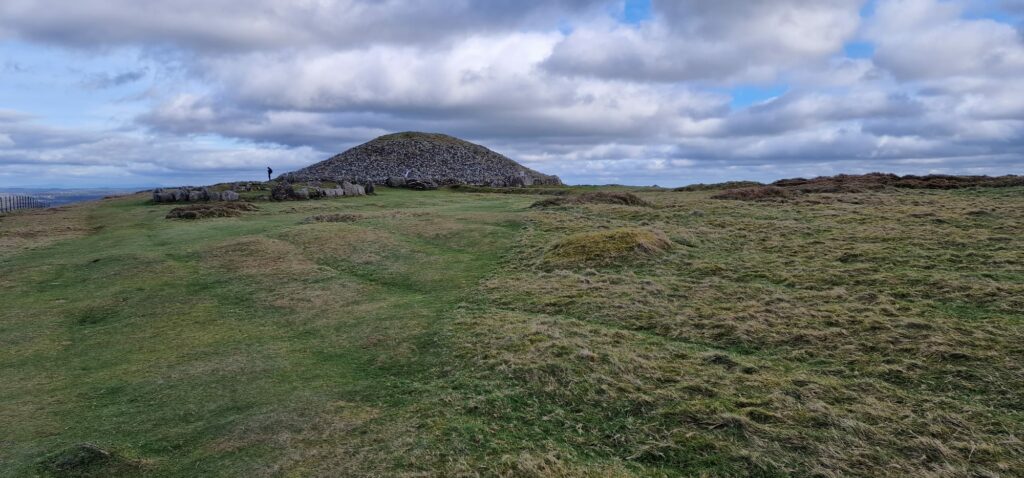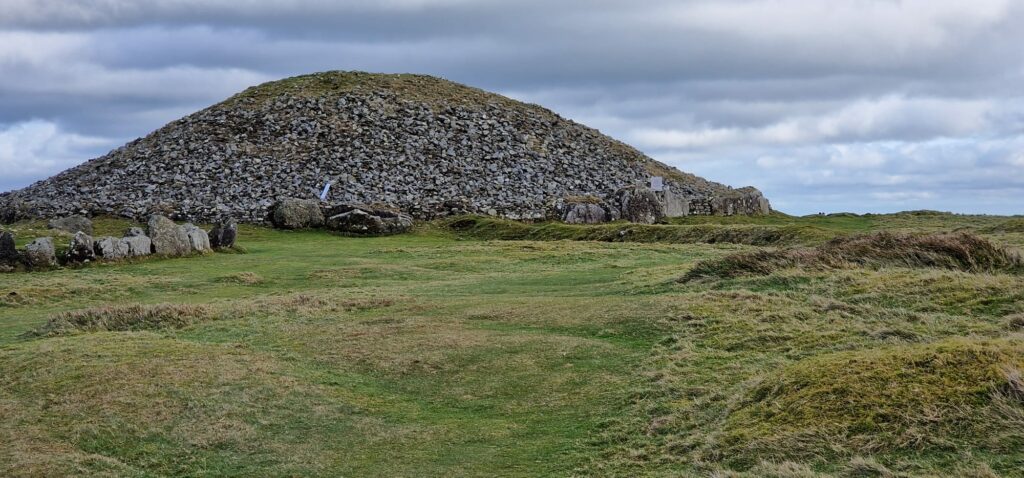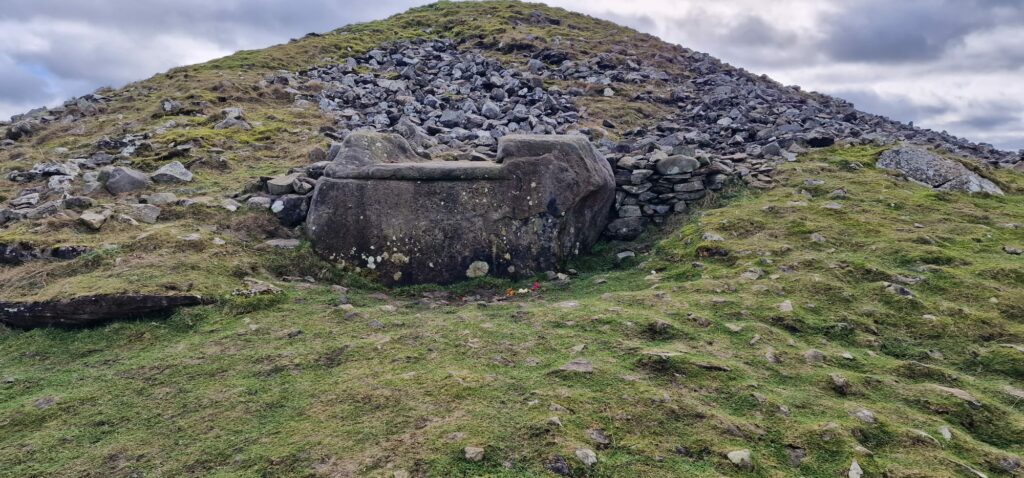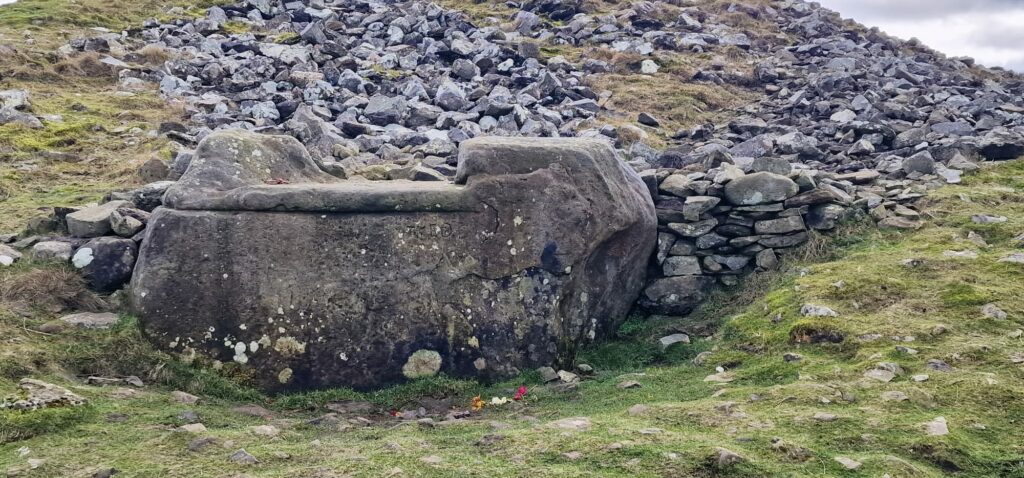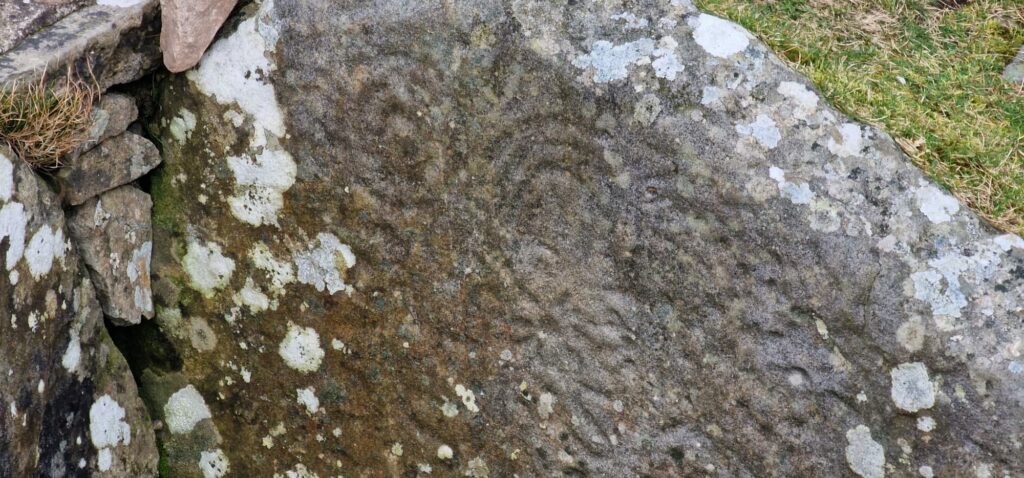Loughcrew or Lough Crew is an area of historical importance near Oldcastle, County Meath, Ireland. It is home to a group of ancient tombs from the 4th millennium BC, some decorated with rare megalithic art, which sit on top of a range of hills. The hills and tombs are together known as Slieve na Calliagh (Sliabh na Caillí) and are the highest point in Meath. It is one of the four main passage tomb cemeteries in Ireland and is a protected National Monument. The area is also home to the Loughcrew Estate, from which it is named.
The tombs at Loughcrew consist of remains of more than twenty ancient tombs, which are spread across four hilltops: Carnbane East, Carnbane West, Carrickbrack and Patrickstown Hill. These hills and the tombs themselves are together known as Slieve na Calliagh or Sliabh na Caillí, meaning “mountain of the Cailleach”, the divine hag of Irish mythology. The monuments are estimated to date from about 3300 BC and consist of cruciform chambers, all of which would have been covered by mounds.

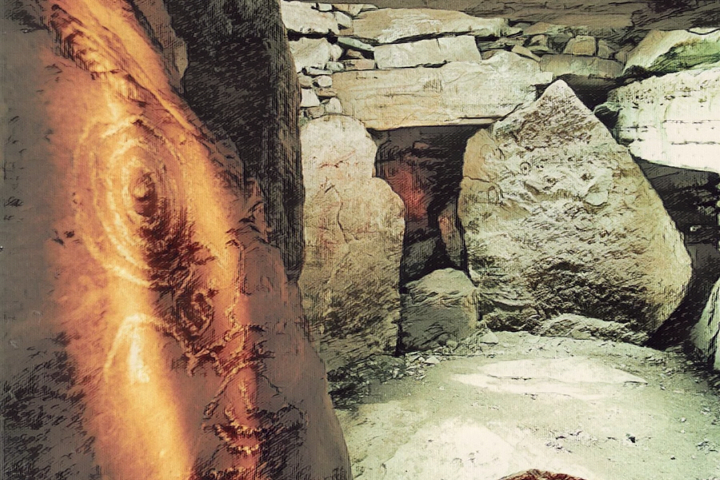
A unique style of petroglyphs is found at Loughcrew, including lozenge shapes, leaf shapes, as well as circles, some surrounded by radiating lines. The orthostats and structural stones of the monuments tend to be from local green gritstone, which was soft enough to carve. In 1980, Irish-American researcher Martin Brennan discovered that Cairn T in Carnbane East is directed to receive the beams of the rising sun on the spring and autumnal equinox – the light shining down the passage and illuminating the art on the backstone.
Gallery
